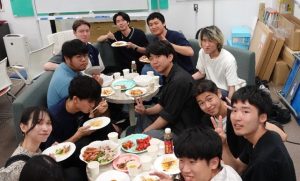The class of Scenario Planning, which is part of the ToTAL course “Fundamental Group Work for Leadership”, was held on July 19–20, 2025.
| Facilitator | Hiroyuki Arai (CEO, Stylish Idea Inc.) |
| Date and Time | Saturday, July 19–Sunday, July 20, 10:00–18:00 |
| Venue | S4-202, Sourth 4 Building, Ookayama Campus |
[Overview] Day 1: Basics of Scenario Planning
Activity 1: Self-introduction
Participants shared their names, fields of study, and expectations for the workshop. This helped ease the tension, especially for those meeting for the first time.
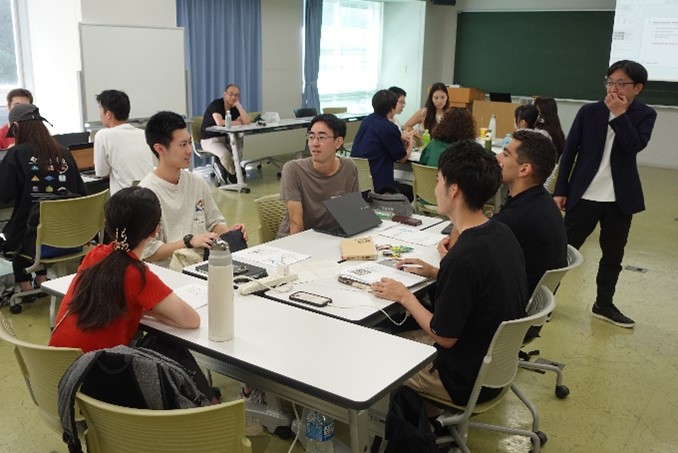
Activity 2: Lecture – Overview of Scenario Planning
We learned that scenario planning is a method of future insight that combines facts with creativity. It emphasizes distinguishing between “certain” and “uncertain” factors and focusing on uncertain ones. Starting with the question “What if…?”, we practiced broadening our thinking to prepare for unexpected possibilities. And I understood that during this process, our own assumptions and “common sense” would change.
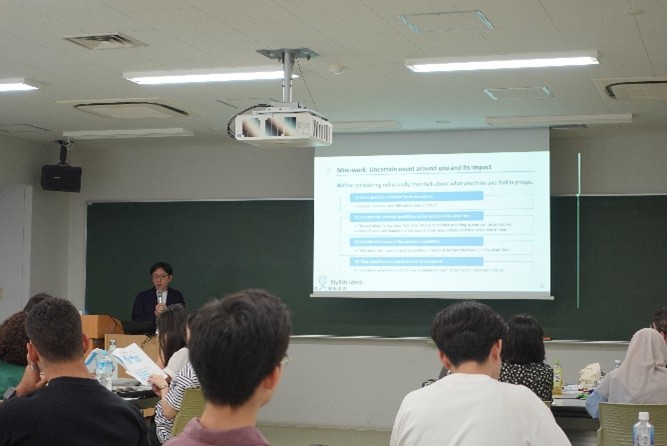
Activity 3: Thinking about Uncertainty in Our Lives
Individually, we listed uncertain events around us and considered their possible impacts. Sharing these reflections in groups allowed us to see how people perceive uncertainty differently.
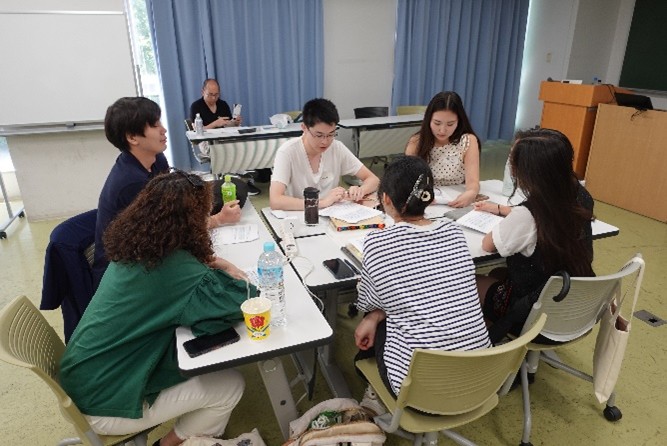
Activity 4: Practicing Scenario Planning
We followed the steps: (1) Topic setting → (2) Base scenario making → (3) Multiple scenarios making → (4) considering strategic options.
Base scenario making: With AI, we brainstormed as many ideas as possible about “What kinds of technologies will be needed in Japanese society in 2035?” After that, each member shared their ideas within the group, organized them into categories.
Multiple scenarios making: Next, we extracted uncertain factors and set up several axes. By combining these axes in different ways, we built multiple scenario patterns and discussed which combinations would generate the most useful perspectives. Considering strategic options: Each group selected one scenario and designed strategic options considering targets, challenges, outcomes, and outputs. Then, they presented their strategies to the others.
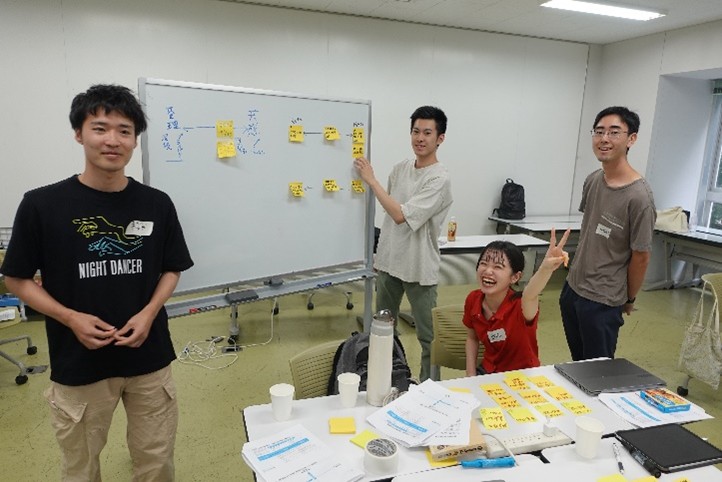
[Overview] Day 2: Applying Scenario Planning
Activity 5: Check-in
Each participant evaluated their condition and motivation. Then, we shared with the group.
Activity 6: Guest Lecture by Mr. Sumiyoshi (Xebec Technology Inc.)
Mr. Sumiyoshi introduced his company’s business, organizational structure, and future vision. He explained how scenario planning can be applied directly to corporate strategy.
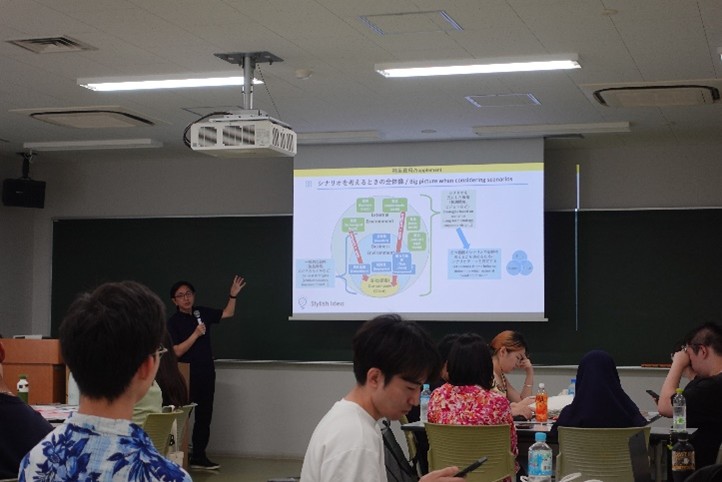
Activity 7: Scenario Creation and Backcasting
Mr. Sumiyoshi shared the challenges he would like to address in his own company based on multiple scenarios. Each group chose a scenario theme and agenda, then created several sample scenarios. Then, they selected one scenario to work on in detail. Using backcasting, we defined the ideal future state, then worked backward to identify intermediate goals and actions that they could start today.
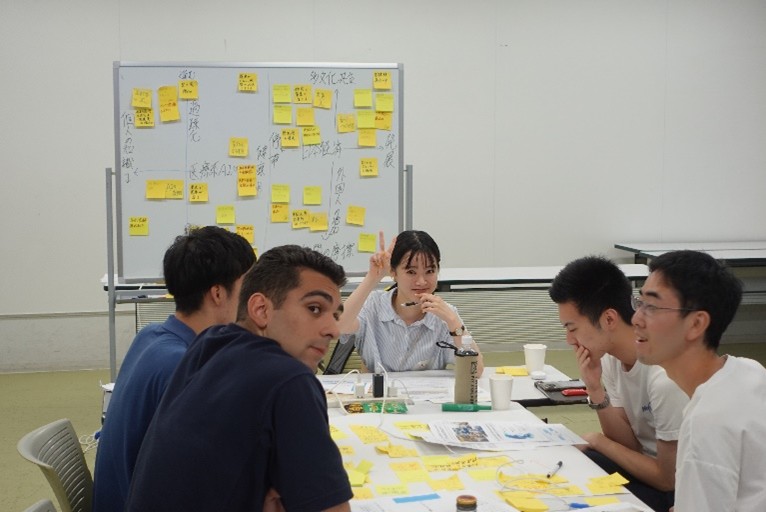
Activity 8: Final Presentations
All groups gave 10-minute presentations followed by Q&A. Each team received direct feedback from Mr. Sumiyoshi.
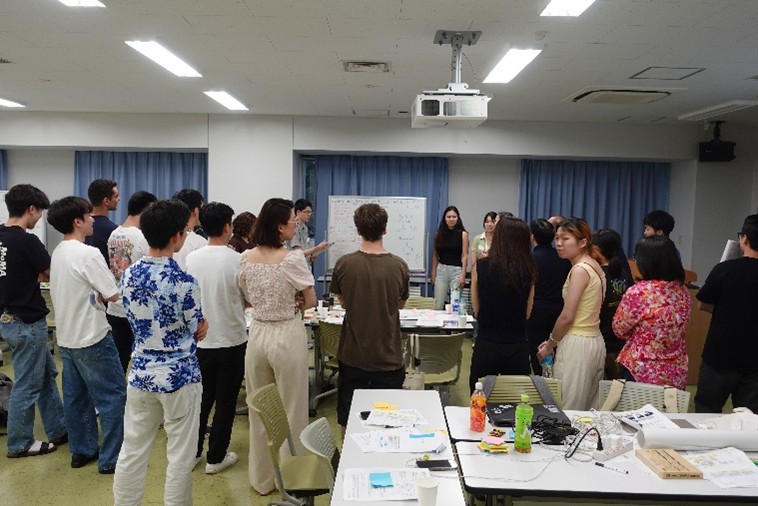
Reflections
Through this two-day workshop, I realized the importance of “envisioning the future based on uncertainty.” By focusing on highly uncertain events, we were able to generate diverse and innovative strategies. The backcasting exercise, especially when combined with a real corporate case, showed me how this approach can be applied not only to companies but also to my own research and career planning. The group discussions with participants broadened my perspectives significantly. I plan to actively take this way of thinking into my research projects and so on. For those interested, I strongly recommend joining this workshop.
Written by:
Yuta Murao, D1, School of Life Science and Technology, ToTAL 6th cohort

